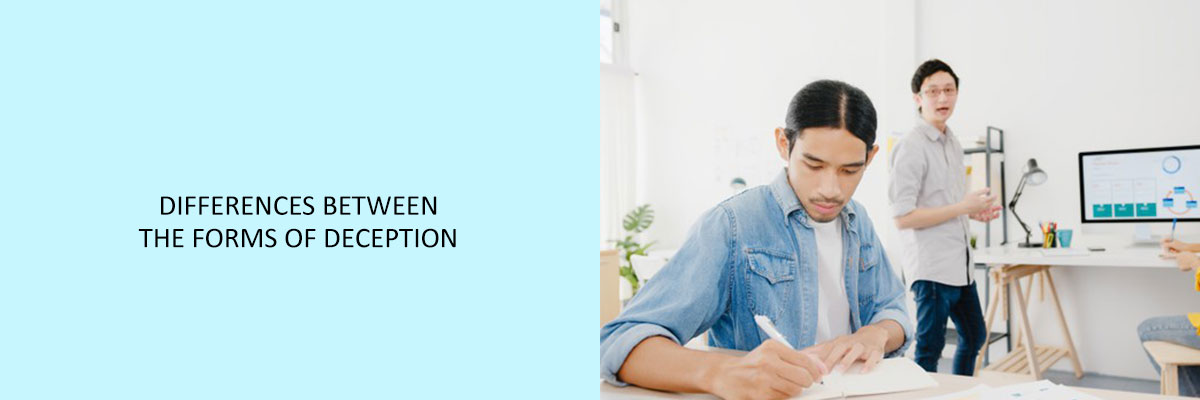Deception is a statement or act which hides the truth, misleads, or promotes an idea, belief, or concept that is not correct. Usually, it is done for personal advantage or gain. Deception can include dissimulation, sleight of hand, and propaganda, along with distraction, concealment, or camouflage. Deception can also be described, with differing subjective implications, deceit, beguilement, bluff, ruse, subterfuge, or mystification.



Deception is a significant relational transgression that leads the way to feelings of distrust and betrayal. Trust is the rock layer of life at every level, from personal and professional to the government of the country. Truth is essential to human action which depends on a shared view of authenticity. Deception violates expectations.
Deception in an organization can impact the trust, credibility, and power between employers and employees. Generally, there are two forms of deception, Concealment, and Falsification. There are clear differences between these subsets of deception, and a successful deception can need both to be present.
Falsification
Falsification means presenting false or incorrect information as if the information is true. It is a false encounter, something completely made up. Falsification can be in relation to a past activity or future intent.
Falsification demands much more brainpower and reasoning, as it is more difficult than concealment. In this, the liar must come up with a convincing tale and should remember every detail of the lie that has been stated in case they are questioned regarding certain aspects again later.
In an organization, if deception goes undetected, then an initial lie can start a process where the pervasiveness, ease, and severity of deception develop with the passing of time. Soon, the act of falsification can become an organization level phenomenon.
Concealment
Concealment means leaving out true or accurate information. That is why concealment is passive. Concealment is about not saying anything, so nothing needs to be made up. This signifies that concealment is less draining on emotional resources and cognition.
Usually, in concealment, the deceiver can feel less guilt and can find it simpler to rationalize and justify. it is easy to cover up concealment as there is no long narrative involved. The deceiver or liar does not need to retain the start, middle, and end of a narrative that has been stated in case they are questioned regarding certain aspects of it again. Concealment is the most challenging type of lie to detect because it lacks cognitive engagement.
Conclusion
Deception and distrust lead to relational violations between employers and employees. It can also form grounds for litigation or can give rise to unlawful prosecution for fraud.
To know more about different forms of deception, join the Compliance Prime webinar.


